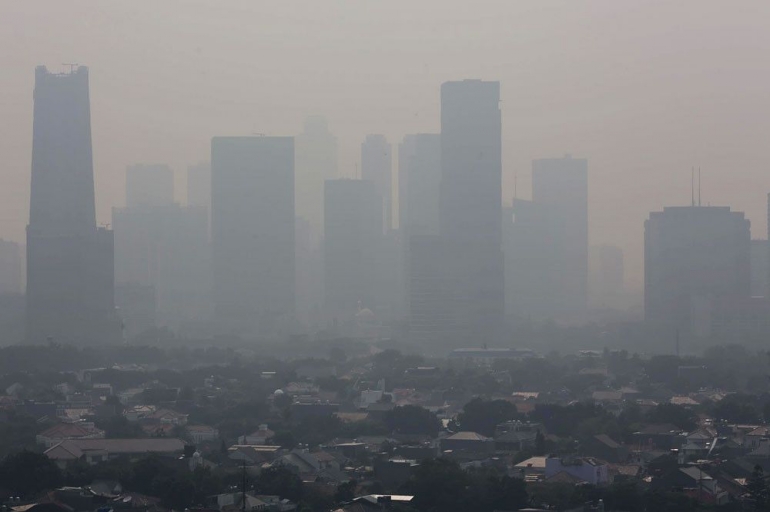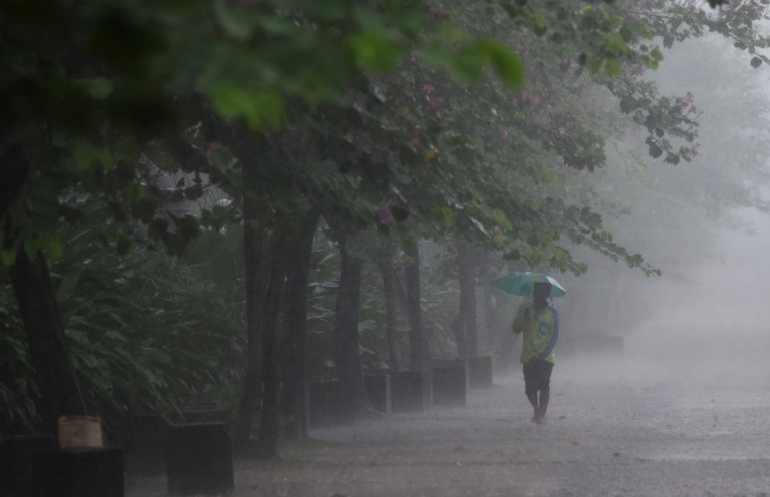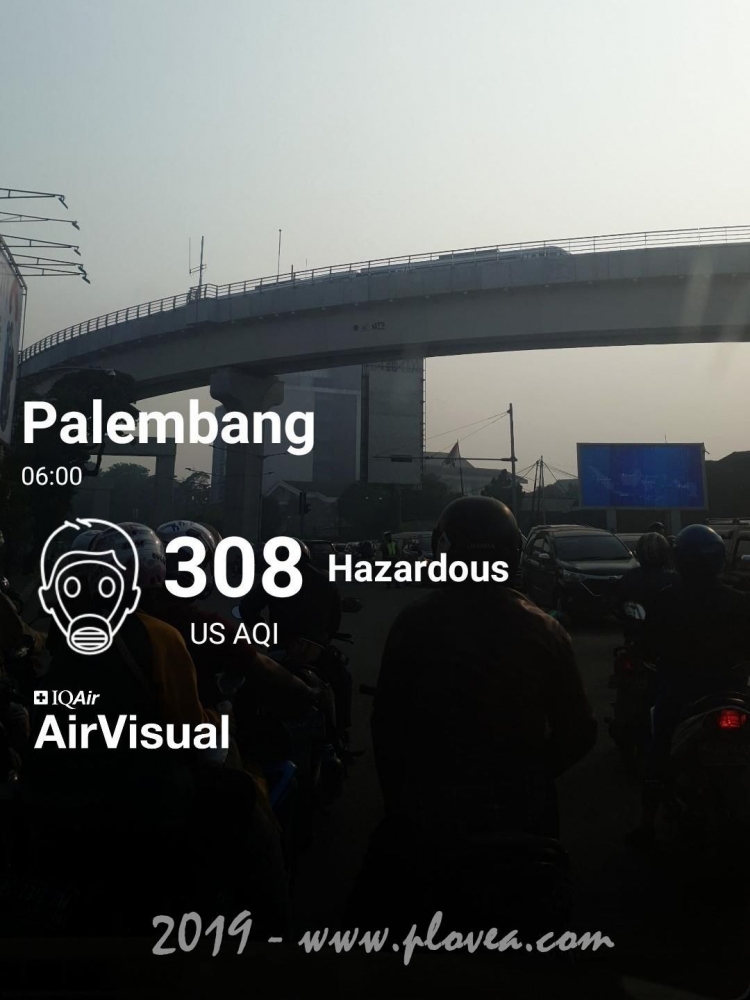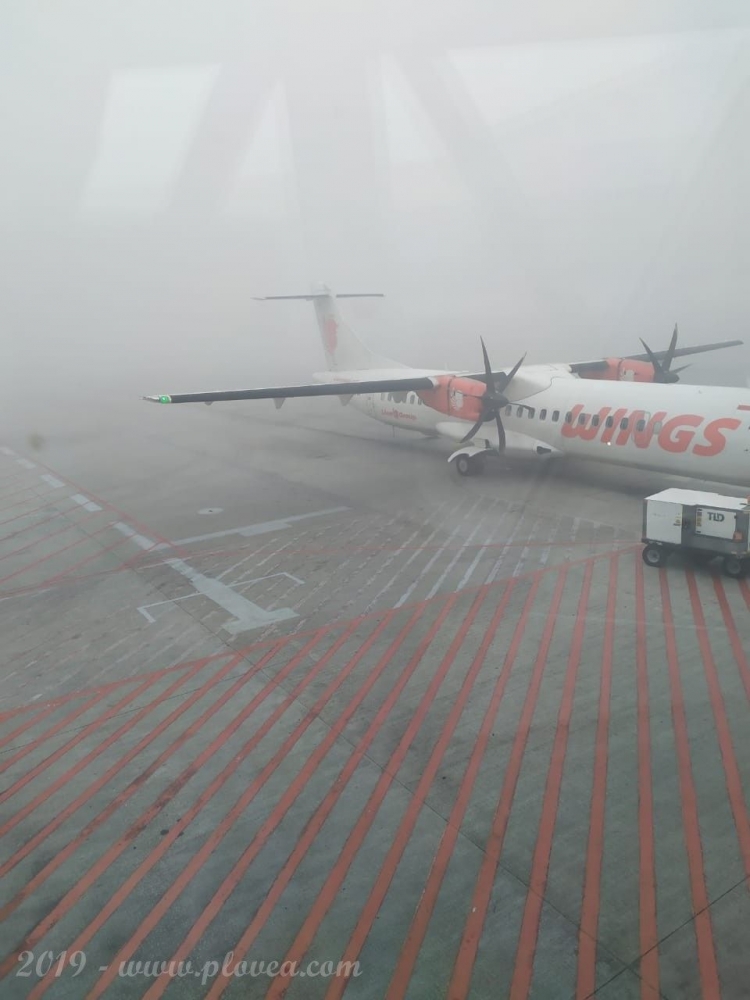Environment is no one's property to destroy; it's everyone's responsibility to protect. – Mohith Agadi
Yes, you read it. The earth is starting to be uninhabitable. In 80 years (that is if you're reading this in 2022), the earth will practically die, if we don't act now. Take a look at a graph showing sea level rises in Jakarta by 2100 (Sea Level Rise: Jakarta)
But, if you're reading this in 2100, and the earth is safe then, well, good job future humans.
I'm also surprised that the internet still exists after 80 years, but I guess memes must live on.
Chapter One: The Main Problem
(+ How to prevent them)
Have you ever felt that your environment is uncomfortable? For example, the moment you wake up, you can smell the dirty air from outside? Or maybe, the dirty water that comes out of your tap? If you have experienced that, or maybe even experienced it, your environment is polluted.
Environmental pollution is when dirty substances enter an environment and pollute or interfere with life in the environment. The causes of pollution are called pollutants. A thing or substance is called a pollutant when the substance that enters the environment pollutes or even poisons the environment.

- Noise Pollution
- Air pollution
- Water pollution
- Soil Pollution
First of all, we have Noise Pollution
Have you ever heard a really loud noise that disturbed your ears, forcing you to cover it for a moment or two? That's what is known as noise pollution. Noise pollution is when there is a disturbance in the environment that results in the insecurity of living things around it.
The source of noise pollution is loud/noisy sound sources. An example is from a factory, where there are engines, vibrations, and air movement of gases and liquids. Others such as loud concerts, speakers, or even just a motorcycle passing you at high speeds. There are also natural sources such as volcanic eruptions, earthquakes, meteors fly-by, etc.
The consequences of noise pollution are as follows.
Living things in a polluted environment, both humans and animals will be disturbed by the irritating loud noise. Sounds that are too loud can result in damage, irritation, or even loss of one's hearing. According to research, sounds that reach above 70db played for a long period can damage one's hearing.
There are a few solutions we can do to prevent noise pollution. First, we can adjust the volume of our sound sources (eg. our music, our voice) to a one that is proportional and comfortable to hear. Secondly, we can definitely ask our neighbors to lower their volume, if they get too disturbing.
Thirdly, while this is a hard thing, (especially during the pandemic), we can spread the news about noise pollution, and how it is bad for humanity and animals alike.
Secondly, we have Air Pollution
I'm sure you heard of the scenario named "fog" where a certain part of a location is covered in dust, ash, smoke, etc. Fogs are normally caused by air pollution.
Air pollution is when air quality becomes damaged and contaminated. There are two types of causes of air pollution, namely Primary and Secondary. Primary is when pollution is caused directly by the pollutant source, and secondary is when the reaction between primary substances in the atmosphere. An example of primary pollution is an increase in CO2. Example of secondary formation of Ozone.

The cause of air pollution is pollutant substances that pollute or poison the air. Some examples of these substances are Carbon Monoxide, Nitrogen Dioxide (NO2), and Sulfur Oxide (SOx).
There are several consequences of air pollution such as acid rain (pH of rain decreases to acid), the greenhouse effect where solar energy is reflected by the amount of CO2, CFCs, methane, ozone, and N2O in the air layer, and damage to the ozone layer. Air pollution can have an impact on us due to the reason that these polluting substances enter our bodies when we breathe. The same applies to plants and animals.
Some solutions are to minimize the use of vehicles, start to grow plants to produce oxygen, and be economical about electricity.
Thirdly, we have Water Pollution
Water Pollution is when the entry of pollutant substances into the water occurs, which pollutes and poisons the water. This is usually due to human activities.
Sources of water pollution can be caused by human activities. Examples of these activities are industrial waste/waste, human waste dumped into the sea, etc. Water pollution has an impact on aquatic organisms that are disturbed because of the size of oxygen. It can also affect humans, who drink water. Contaminated water sources can no longer be drunk and can cause diseases such as cancer and birth defects if drunk.
Some ways to overcome water pollution are by not throwing garbage into rivers, recycling waste that can be recycled, and maintaining clean or unpolluted water sources.
Lastly, we have Soil Pollution
Soil pollution occurs when man-made chemicals enter and pollute the natural soil environment.
This pollution usually occurs because
- Leakage of wastewater or industrial chemicals or commercial facilities
- The entry of polluted ground surface water into the sub-surface layer
- Accidents of vehicles carrying oil, chemicals, or waste
- Liquid waste that is directly discharged to the ground
There are 3 components of soil pollution, which are:
1. Domestic Waste
Derived from human domestic activities, such as trade/market/hotel business premises and others, can be in the form of solid and liquid waste.
2. Industrial Waste
Derived from industrial activities. Usually the remains of industrial production. Can be solid or liquid.
3. Agricultural Waste
Derived from agricultural activities. Could be the remains of the fertilizer that fertilizes plants.
There are two ways to deal with soil pollution, named:
1. Remediation
Remediation is an activity to clean contaminated soil, by digging the contaminated soil and bringing it to a safe place. After the soil is in a safe area, the soil is cleaned of contaminants.
2. Bioremediation
Bioremediation is the activity of cleaning the soil, but this time using microorganisms (fungi, bacteria, etc.). This bioremediation activity aims to make pollutants less / non-toxic.
Now that I have explained all of the pollution, I would like to focus on the Air Pollution, which results in the upcoming points in this article.
Chapter 2: The Effects of the Problem
There are several consequences of environmental pollution. One of them, indirectly, can cause global warming. For example, air pollution can cause a greenhouse effect, which results in global warming, which can lead to climate change.
Before we get into all of that, we need to get it all from step one.
A. It begins | The Greenhouse effect
Once you start down the dark path, forever it will dominate your destiny -George Lucas
The greenhouse effect is when sunlight that enters the earth is mostly TRAPPED, which is caused by the immense amount of gasses in the atmosphere. The cause of the existence of these gasses is Air Pollution, which I mentioned in the previous chapter.
The substances that factories, cars, and any air pollutants emit are CO2, CFCs, methane, ozone, and N2O. These muddle up in the atmosphere, which traps the sunlight coming in, and lets a small percentage come out.

This results in another scenario, where the earth gets warmer. Otherwise known as...
B. It gets worse | Global Warming
Global warming is when the trapped sunlight heats parts of the earth, as it keeps reflecting inside the earth's atmosphere.
To illustrate it, imagine placing mirrors that face each other. You can clearly see the mirrors reflecting back and forth. The same thing goes with the sunlight reflecting over and over with the earth and its atmosphere. At least, a smaller percentage of sunlight comes out, but it doesn't change the fact of how the rest of the sunlight stays inside.
This sunlight, heats the earth, causing a few impacts on earth. The most popular one is the melting of ice in the earth's ice caps. Earth's ice caps can melt due to global warming, and we all know what ice turns to when it melts.
it turns to, water
Water is then added to the world's ocean. Little by little, the sea level rises. According to research published in 2018, Antarctica has lost roughly 3 Trillion tons of its ice (Link to article: Click Here). For comparison, the average adult African bush elephant weighs around 9 tons.
This means in 25 years, the amount of ice lost is equal to 300 billion elephants. This also means that the earth gets 300 B elephants of water in the past 25 years, causing global sea levels to rise by 7.6 mm. It doesn't look like much, but it WILL get worse if it isn't stopped.
Fun fact, the reason Venus is so hot, is exactly what I just explained. The thick atmosphere on Venus traps sunlight, and the entire process of global warming occurs. This is why Venus is the hottest planet, not mercury, even though Mercury is closer to the sun than Venus is.

And, if you think it can't get any worse...
disclaimer, it DID get worse.
C. Look, it got even worse | Climate Change
Circumstances have changed -Silver, Sonic 2006
At this point, circumstances have indeed changed. For the weather, that is.
According to the United Nations, climate change refers to long-term shifts in temperatures and weather patterns. These shifts may be natural, but since the 1800s, human activities have been the main driver of climate change, primarily due to the burning of fossil fuels (like coal, oil, and gas), which produces heat-trapping gases.
There are several cases of Climate Change, one of which is in Indonesia. Indonesia where I live is a tropical climate, which means that I, as an Indonesian, should only have 2 seasons. The first is known as Musim Kemarau which is Dry Season in English, and the second is Musim Hujan which is Rainy Season in English.
Supposedly, the dry season should start in March, and end in August. The rainy season should start in September, and end in February.
But, in what I experienced this year, the rainy seasons took more than they should. March and April of 2022 were still rainy, and it didn't really change to a dry season. If you check the internet on the period for seasons in Indonesia, some of them have even updated it to be the ones affected by climate change.
Here's an article from 2016, explaining the delays on weather changes in Indonesia (Click Here)

As you can see, the world is getting uninhabitable, just as how I mentioned earlier. By 2100, research shows that temperatures around the earth could go up by 5°C by 2050 if not handled well (Link: Click Here)
Chapter 3: An Emphasized View on Air Pollution
An example of this is the 2019 Palembang Smog. An example of Air Pollution.
Smog: A smoky fog
In case you didn't know, there was a massive fog in Palembang, Indonesia back in 2019. I can confirm this because I lived in Palembang then. The fog was extremely massive. It got schools shut down, and it's one of the reasons my brother has Asthma.
Words can't describe how massive the fog was. So here, are some images.


Here's an image my dad took at the airport. Flights were canceled at that time. Fun fact, there are two planes in that image. The fog is so thick, that it makes the plane in the background invisible.

Here's a citizen's view on the fog back in October 2019. Footage uploaded by Ody Ony on Youtube.
You can hear the person in the video repeatedly saying "Ampera", which is a bridge Palembang is famous for. He's saying that he is currently on his way to the big Ampera bridge, but it is nowhere to be seen. The Ampera bridge is literally in front of him, but it is not visible because of the fog.
The cause of these is mostly forest fires that were made by some naughty civilians. The gas and substances emitted from the forest fire created a fog.
Thankfully, this problem was resolved back in 2019, and the air became normal. Though if something like this were to happen again, there could be a few solutions.
- Reduce the amount of gas released by reducing the use of cars, motorcycles, or any gas-emitting transportation.
- Usually, the source of fog is a forest fire, committed by humans. Thus, the government should be looking for these culprits to stop the forest fire from growing
- The government can also extinguish the forest fire by sending firefighters who can apply water or fire retardant on the ground (using pumps or special wildland fire engines) or by air (using helicopters/airplanes). Src: Here
Those are some of the solutions I could think of for this matter. Some of these were practiced during the smog.
There are numerous ways to prevent Air Pollution. One of them is replacing gas stoves with electrical ones.
According to Proline, an electric stove is better for the environment than a gas stove. Unlike electric stoves, gas stoves produce carbon monoxide, nitrogen dioxide, and formaldehyde which leads to Air Pollution. These compounds are harmful to the environment and your health. Even though a gas stove serves a better purpose on energy consumption, an electric one has been proven to be less pollutive towards the environment since they don't emit harmful gasses to the environment.
Since Air Pollution causes Global warming, this is also a reason to minimize or even stop the usage of gas stoves.

Here is a more detailed look at the advantages of using an electrical stove according to my mother's blog.
- Save energy, because no energy is wasted. All the energy produced is induced directly into the cookware
- Heat spreads quickly on the stove as it is activated
- Safer, because the surface of the stove (except those in direct contact with the base of the cooking utensil that is being heated) does not heat up. In addition, it is safe because this type of stove has a feature to turn off automatically when the heating is excessive.
- Electrical stoves are equipped with a variety of cooking mode menus and various levels of electric power/heat that can be changed at any time while cooking. The mode and heat change the moment we press a button. This makes the cooking process comfortable because the heat needed to cook food can be controlled properly.
- Easy to clean
All the more reason to use electrical stoves rather than gas. Even though this seems like a small act, it's still one of many ways we can do to decrease air pollution and all the things it leads to.
Chapter 4: Conclusion
In conclusion, the Earth is burning. Slowly, but surely. From pollution, greenhouse effect, global warming, climate change, and who knows what else? As a Christian, I know that one of the main jobs of being a human is to keep the planet clean, safe, and sound. God has trusted us with Earth
Then God said, “Let us make mankind in our image, in our likeness, so that they may rule over the fish in the sea and the birds in the sky, over the livestock and all the wild animals, and overall the creatures that move along the ground.”
If the matter is not quickly solved, it could quite literally become the Earth's end. We wouldn't want that now, would we?
If that's what you want then... are you even human?
Sources:
Pencemaran Lingkungan.pptx (Link not Available)
https://www.un.org/en/climatechange/what-is-climate-change
https://jakartaglobe.id/news/indonesia-see-late-rainy-dry-season-national-weather-agency
https://www.nature.com/articles/d41586-020-01125-x
https://plovea.com/2019/09/25/karena-tuhan-selalu-baik/#more-12791
https://plovea.com/2019/10/14/kabut-asap-libur-sekolah-dan-mutasi/
https://plovea.com/2018/03/26/review-kompor-listrik/
https://www.prolinerangehoods.com/blog/gas-electric-stove-better-environment/


















